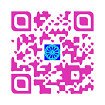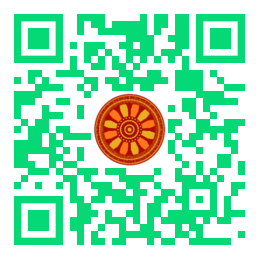
:: International Transaction Journal of Engineering, Management, & Applied Sciences & Technologies
http://TuEngr.com

ISSN 2228-9860
eISSN 1906-9642
CODEN: ITJEA8
FEATURE PEER-REVIEWED ARTICLE
Vol.12(7) (2021) |
Towards Building Group Cohesion and Learning Outcomes based on Nonverbal Immediacy Behavior
 Abdulwahab M. Alsulami (College of Communication and Media, King Abdulaziz University, Jeddah, SAUDI ARABIA).
Abdulwahab M. Alsulami (College of Communication and Media, King Abdulaziz University, Jeddah, SAUDI ARABIA).
Disciplinary: Communication & Education, Behavioral Sciences, Cooperation, Collaboration, & Partnership.
doi: 10.14456/ITJEMAST.2021.146
Keywords: Nonverbal immediacy; Learning outcomes; Verbal behavior; Verbal behavior; Small group; Social attraction to the group; Communicative behavior; GEQ; Task attractions to the group.
AbstractThis article investigated the role of nonverbal immediacy in building group cohesion and effective learning outcomes. By assessing the perception of 82 participants' nonverbal immediacy and group cohesion, results showed the more effective nonverbal behaviors used among teammates, the more positive the increase in learning outcomes. Moreover, group task integration was the only element of group cohesion that was impacted by nonverbal immediacy behaviors. Discussion focuses on future study suggestions and explains the dynamics of significant relationships between nonverbal immediacy and group cohesion variables. This study offers important insights to understand the communicative behaviors group individuals use to enhance their immediacy.
Paper ID: 12A7T
Cite this article:
Alsulami, A. M. (2021). Towards Building Group Cohesion and Learning Outcomes based on Nonverbal Immediacy Behavior. International Transaction Journal of Engineering, Management, & Applied Sciences & Technologies, 12(7), 12A7T, 1-10. http://doi.org/10.14456/ITJEMAST.2021.146
References
- Andersen, J. F. (1979). Teacher immediacy: A predictor of teaching effectiveness. In D. Nimmo (Ed.), Communication yearbook 3 (pp. 543-559). New Brunswick, NJ Transaction.
- Andersen, J., Andersen, P., & Jensen, A. (1979). The measurement of nonverbal immediacy. Journal of Applied Communications Research, 7(2), 153.
- Anderson, C. M., & Martin, M. M. (1999). The relationship of argumentativeness and verbal aggressiveness to cohesion, consensus, and satisfaction in small groups. Communication Reports, 12, 21-31.
- Brawley, L. R., Carron, A. V., & Widmeyer, W. N. (1987). Assessing the cohesion of teams: Validity of the Group Environmental Questionnaire. Journal of Sport Psychology, 2, 275-294.
- Christophel, D. M. (1990). The relationships among teacher immediacy behaviors, student motivation, and learning. Communication Education, 39, 323-340.
- Comstock, J., & Rowell, E. (1995). Food for thought: Teacher nonverbal immediacy, student learning, and curvilinearity. Communication Education, 44(3), 251. http://search.ebscohost.com.proxy.missouristate.edu
- Creswell, J.W. (2003). Research Design: Qualitative, quantitative and mixed methods approach. 2nd Ed., Thousand Oaks, CA: Sage Publications.
- Folwell, A. L. (2000). A comparison of professors' and students' perceptions of nonverbal immediacy behaviors. Journal of the Northwest Communication Association, 29, 41-58.
- Keaten, J. A., Pribyl, C. B., & Sakamoto, M. (2004). The relationship between nonverbal immediacy, student motivation, and perceived cognitive learning among Japanese college students. Japanese Psychological Research, 46(2), 73-85. http://www.unco.edu/keaten/NVI%20Japan%20Study.pdf
- Levine, K., & Violanti, M. (2008). Rating my group members and their rating of me: Is there a relationship between ratings, social loafing and group cohesion? Paper presented at the National Communication Association Conference, 1-28.
- McBride, M. C. (2006). "-ing" project: Encouraging cohesion in small groups. Communication Teacher, 30, 53-66.
- Mehrabian, A. (1971). Silent messages. Belmont, CA: Wadsworth Publishing Company.
- Myers, S. A., Shimotsu, S., Byrnes, K., Frisby, B. N., Durbin, J., & Loy, B. N. (2010). Assessing the role of peer relationships in the small group communication course. Communication Teacher, 24, 43-57.
- Park, H. S., Lee, S. A., Yun, D., & Kim, W. (2009). The impact of instructor decision authority and verbal and nonverbal immediacy on Korean student satisfaction in the US and South Korea. Communication Education, 58(2), 189-212. DOI: 10.1080/03634520802450531
- Pogue, L.L., & AhYun, K. (2006). The effect of teacher nonverbal immediacy and credibility on student motivation and effective learning. Communication Education, 55(3), 331-344.
- Richmond, V., McCroskey, J., & Johnson, A. (2003). Development of the nonverbal immediacy scale (NIS): Measures of self- and other-perceived nonverbal immediacy. Communication Quarterly, 51(4), 504-517.
- Rosenfeld, L. B., & Gilbert, J. R. (1989). The measurement of cohesion and its relationship to dimensions of self-disclosure in classroom settings. Small Group Behavior, 20, 291-301.
- Sanders, J. A., & Wiseman, R. L. (1990). The effects of verbal and nonverbal teacher immediacy on perceived cognitive, affective and behavioral learning in the multicultural classroom. Communication Education, 39, 341-353.
- Simons, M. E., & de Ridder, J. A. (2004). Renewing connections and changing relations: Use of information and communication technology and cohesion in organizational groups. Communications, 29, 159-177.
- Turman, P. D. (2008). Coaches' immediacy behaviors as predictors of athletes' perceptions of satisfaction and team cohesion. Western Journal of Communication, 72(2), 162-179. DOI: 10.1080/10570310802038424
- Weinberg, S. B. (1979). Measurement of communication aspects of group cohesion. Journal of Applied Communication Research, 7, 55-60.
- Widmeyer, W. N., Brawley, L. R., & Carron, A. V. (1985). The measurement of cohesion in sport teams: The group environment questionnaire. London, Ontario: Sport Dynamics.
- Wrench, J. S., Thomas-Maddox, C., Richmond, V. P., & McCroskey, J. C. (2008). Quantitative research methods for communication: A hands-on approach. New York: Oxford University Press.
Other issues:
Vol.12(6)(2021)
Vol.12(5)(2021)
Vol.12(4)(2021)
Vol.12(3)(2021)
Vol.12(2)(2021)
Archives
Call-for-Papers
Call-for-Scientific PapersCall-for-Research Papers: ITJEMAST invites you to submit high quality papers for full peer-review and possible publication in areas pertaining engineering, science, management and technology, especially interdisciplinary/cross-disciplinary/multidisciplinary subjects.
To publish your work in the next available issue, your manuscripts together with copyright transfer document signed by all authors can be submitted via email to Editor @ TuEngr.com (no space between). (please see all detail from Instructions for Authors)
Publication and peer-reviewed process:
After the peer-review process (4-10 weeks), articles will be on-line published in the available next issue. However, the International Transaction Journal of Engineering, Management, & Applied Sciences & Technologies cannot guarantee the exact publication time as the process may take longer time, subject to peer-review approval and adjustment of the submitted articles.